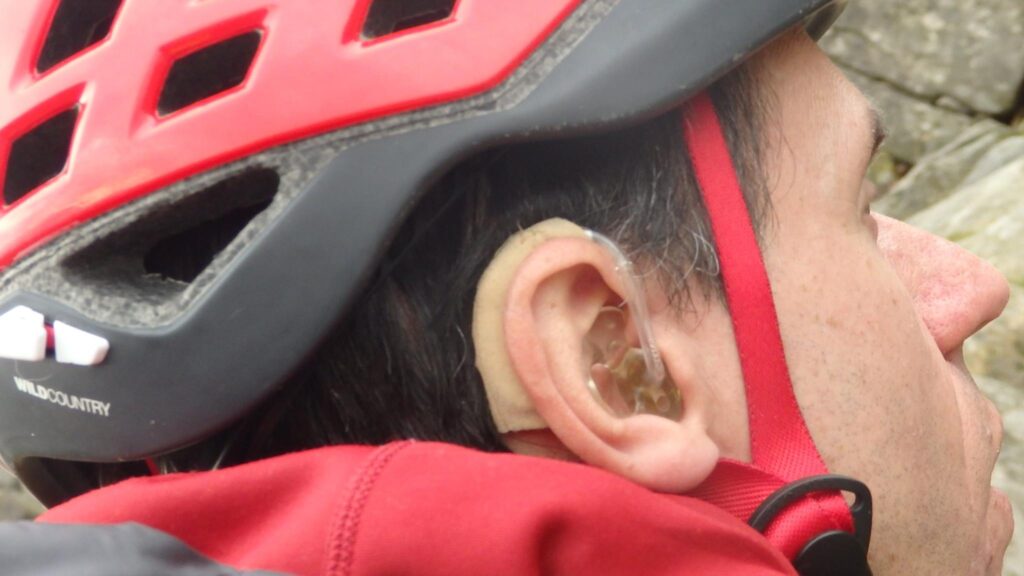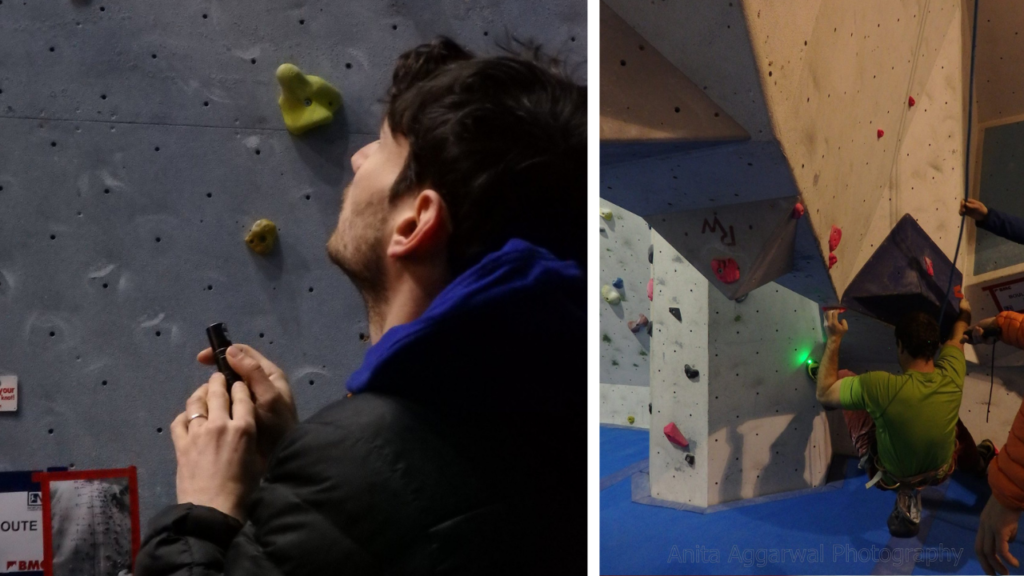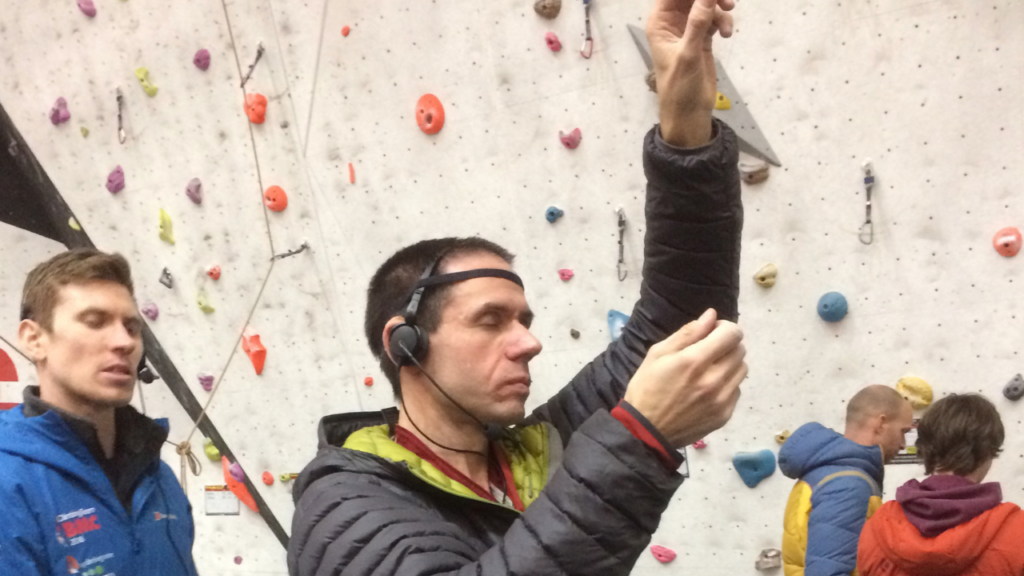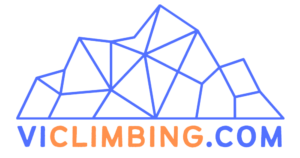Contents
While relatively uncommon, combined sight and hearing loss (deaf-blindness) can be caused by genetic conditions that affect both sight and hearing (like John who has Usher Syndrome) or two separate conditions. There are people who have no sight or hearing but most deafblind people have some remaining vision or hearing.
When it comes to climbing, some of the typical ways of working with a VI climber may need to be adapted for deafblind climbers.
Communication
Deafblind people may use BSL, deafblind manual (a tactile form of communication using finger spelling) or wear hearing aids. For somebody like John, who can hear using hearing aids, the impact is minimal: resulting in just the occasional misunderstanding. Hearing aids can work fantastically, but it’s important to remember that they may not work as well in noisy or windy environments. For some deafblind people verbal communication won’t be possible and that can present a challenge.
To have a successful partnership, guides and climbers need to be able to communicate effectively. On the ground, there should be little problem communicating regardless of the method used with the right knowledge. BSL and deafblind manual can be learnt online or through courses, but climbers may also have an interpreter.
The challenge is that any form of communication that relies on touch (deafblind manual) or sight (lip reading, BSL) won’t usually work once the climber is on the wall. For easy climbs, this is unlikely to be an issue, but as soon as grades get pushed there is a need for some communication on the wall.

Adaptations, tips and ideas.
There won’t be a one-size-fits all approach for deafblind climbers and sighted guides to take in climbing. Time will need to be spent in getting to know each other and finding techniques that work for you. That said, we have given this a lot of thought and have tried a few things, so we will share what we know.
Laser pens
While lasers are not permitted in international competition, they can be very useful for climbers with some remaining vision or the ability to see bright lights which does include some people in the B1 category. It’s one of the easiest ways to direct a person to the a hold and doesn’t rely on verbal information which is a big plus for deafblind climbers.

Route reading
By understanding the route well before hand, the need for communication on the route will be reduced. If a climber can see a phone or photo this could be used as part of the process. If they can’t see well enough then using LEGO or conventional route reading styles will help. You may need to pause between holds to share information about the route throughout the route read.
Support climbers
Having a climber along side may be helpful for deafblind climbers. They may be close enough for BSL or lipreading to be useful for some climbers.
Route selection
In competition, most walls only have one route set on them. While this is rarely replicated outside of competition it is something that can be found more often when bouldering. This can be useful because it means that every hold the climber touches is ‘in’. Choosing routes with distinctive, contrasting holds will help climbers with some vision stay on route.
Sounds
It may be possible to use sound with climbers that have some hearing even if they cannot hear words. By using a phone or by connecting to hearing aids it may be possible to pipe in a sound that the climber can hear. With practice, this could be used to help direct a climber to a hold. For example, two beeps for left, one for right.

